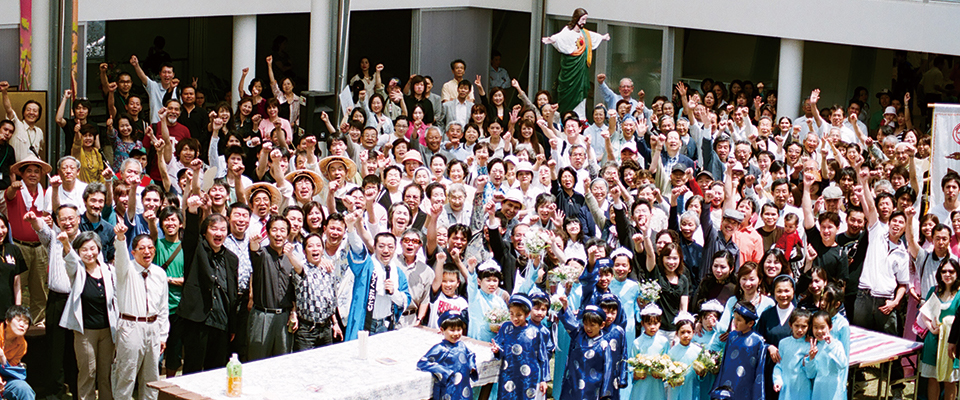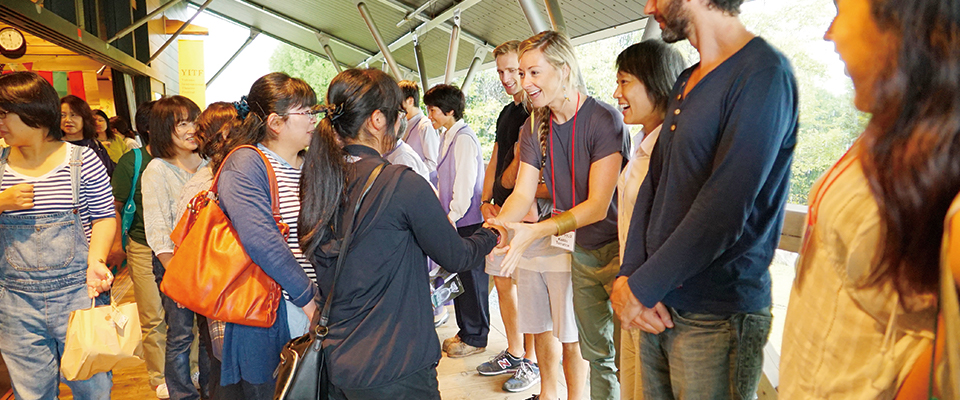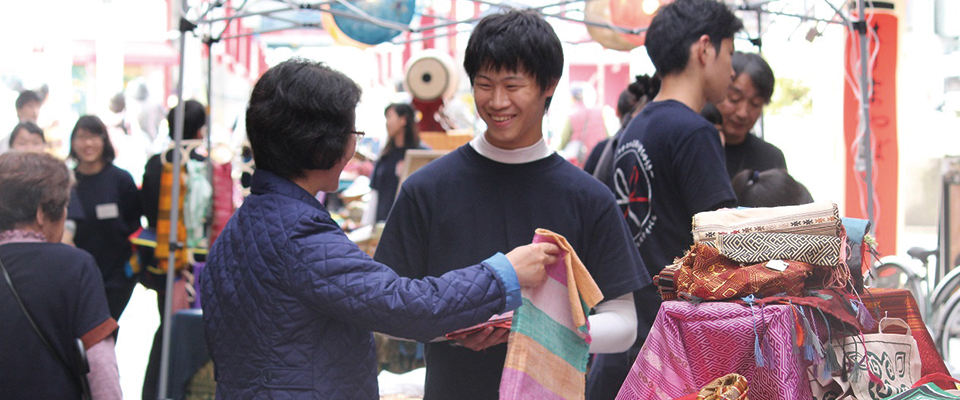The Japan Foundation Prizes for the Promotion of Community-Based Cultural Exchange (2002)
Awardees (in geographical order)
Takatori Community Center
- Representative
- Year of Establishment
- 1995
- Website
- http://tcc117.jp/
- Social Media Accounts
- https://www.facebook.com/takatoricommunitycenter/?fref=ts
- https://twitter.com/tcc117

The Takatori Community Center evolved from the Takatori Relief Station, which was set up in the grounds of the local Takatori church to coordinate volunteer work in the aftermath of the Great Hanshin-Awaji Earthquake of 1995. After the initial period of intense relief work, the focus gradually shifted towards volunteer work in the area of multicultural harmony. The present name was adopted in 2000 when the group was officially granted the status of designated non-profit corporation. The Takatori Community Center is made up of nine NGOs all working towards the common goal of welcoming the minority groups including many foreign residents of varying nationalities who live in Nagata ward and helping them to feel a part of the local community. (The NGOs are: FM Waiwai, FM Waiwai Tomo no Kai, the Kobe Residents Foreigner Support Center, Leaf Green, FACIL Multilingual Center, World Kids Community, the Asian Women’s Empowerment Project, Tour de Communication and NGO Vietnam in Kobe.) The NGOs all pursue their own independent activities, such as multilingual FM broadcasting, translation of important household information into multiple languages, support services for the children of non-Japanese residents, a second-hand computer collection and refurbishment program for minority groups, support services for elderly and physically handicapped persons, and studies of conditions in Japan for permanent non-Japanese residents. At the same time, the NGOs are increasingly getting together to share their experience and personnel for joint initiatives designed to meet the needs of the local area. In enabling the various member NGOs to operate independently while providing a flexible coordinating structure under the one umbrella organization, the Takatori Community Center shows the way forward for NPOs dedicated to the cause of multicultural harmony.
Ashibue Theater Group
- Representative
- Year of Establishment
- 1966
- Website
- https://www.ashibue.jp/
- Social Media Accounts
- https://www.facebook.com/ashibue.org/
- https://twitter.com/shiinomi_yakumo

The Ashibue Theater Group was formed in 1966 in the city of Matsue with the aim of boosting awareness of theater as an art form. The Yakumo Sweet A’corn Theatre, a publicly funded but privately operated facility, was born in 1995 out of the Group’s idea of building a 100-seat theater, which coincided perfectly with the cultural aspirations of the village of Yakumo. After participating in a number of international theater festivals in the United States and Canada, the Ashibue Theater Group was keen to stage a similar festival themselves. Eventually, through their grass-roots work in local theater, they were able to realize their dream with the 1st Yakumo International Theater Festival in 2001. Seven distinguished theater groups from five culturally diverse countries were represented at the Festival. Local residents not only enjoyed the valuable experience; many volunteered for the running of the Festival itself, billeting participants under homestay arrangements and organizing an international exchange program for the benefit of children in all age groups. In this way, the Festival served as a valuable forum for promoting cross-cultural understanding and awareness. The willingness of the local government and community to donate their time to help out with planning and organizing the Festival together with the Ashibue Theater Group signifies a community keen to participate actively in its future. The Ashibue Theater Group serves as a model of how cultural exchange can promote growth and development at the local level.
Kochi Commercial High School Student Society
- Representative
- Year of Establishment
- 1994
- Website
- http://www.kochinet.ed.jp/kochisho-h/

The association between the Kochi Commercial High School Student Society and the country of Laos dates back to 1994, when the Student Society conducted a fund-raising campaign after hearing of local NGO the Kochi Laos Association and its work in assisting the reconstruction of schools in Laos. In 1996, the Student Society launched a project designed to harness the commercial skills taught at the school. A mock company was set up, and donations were solicited from the PTA, teachers and other students. The funds were used to purchase handicrafts on student trips to Laos, which were then sold at the school festival. A share of the profits was donated to the cause of school reconstruction. Other initiatives include introducing Japanese school athletics meetings to local schools in Laos, and measuring local school students’ height in Laos in order to compare the statistics with those of Japanese counterparts. These unique forms of cultural exchange—surely something that only high school students would dream up—are described at length at school festivals and other opportunities. The Student Society is also involved in organizing a street trading fair to showcase products from Laos. Last November saw the opening of a shop called Lao Sky selling Laotian handicrafts in an empty retail space in the local shopping precinct, which was set up with the assistance of the Chamber of Commerce and an NGO called Brain run by former students. The diversity of activities undertaken by the Student Society is most inspirational. Through commercial activities befitting a commercial school, the Student Society has made a valuable contribution to the school reconstruction project in Laos run by the local NGO; at the same time, the Student Society is also helping to stimulate the local shopping precinct and to enhance international understanding in the local community.
- What We Do Top
- Arts and Cultural Exchange [Culture]
-
Japanese-Language Education Overseas [Language]
- Japanese-Language Education Overseas [Language] Top
- Learn Japanese-language
- Teach Japanese-language
- Take Japanese-Language Test
- Know about Japanese-language education abroad
- The Japanese-Language Institute, Urawa
- The Japanese-Language Institute, Kansai
- Japanese-Language Programs for Foreign Specified Skilled Worker Candidates
- Japanese Language Education for Japanese Children Resident Overseas and for the Descendants of Migrants
- Archives
- Japanese Studies and Global Partnerships [Dialogue]
- JF digital collection
- Other Programs / Programs to Commemorate Exchange Year
- Awards and Prizes
- Publications
